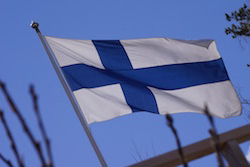Any 700MHz spectrum freed in Finland should be split equally between 4G operators building 800MHz LTE networks, according to a new report.
Finnish operator DNA commissioned management consultancy Valor Partners to look into the possibilities of the frequency band, after the European Commission announced it was seeking views on the subject earlier this month.
700Mhz, which is currently used by broadcasters, offers better indoor and outdoor coverage and is regarded by many in the telco industry as the best candidate for widely-harmonised spectrum use.
Valor’s report concluded that the spectrum should be divided equally amongst the operators building 4G networks in the 800MHz frequency in Finland, which at present includes DNA, TeliaSonera Finland and Elisa.
According to Valor, 700MHz is needed to secure sufficient capacity for 4G networks, as frequencies over 1GHz are not efficient in rural areas.
Using both 700MHz and 800MHz spectrum will improve network performance in Finland’s sparsely-populated regions while also maintaining competition to ensure good connections across the country, the report concluded.
Valor added that maintaining Finland’s competitiveness required “a more efficient and extensive” mobile broadband network, which in turn would facilitate next-gen services including remote healthcare and “virtual learning environments.
A DNA statement read: “An equal division of frequencies between three operators ensures the continuation of the current state of healthy competition.
“Valor’s study sees robust competition as one of the most important reasons behind Finland’s internationally excellent mobile networks, good service level and affordable user prices.”
Read more:
UK regulator to free up 700MHz band for operators, safeguard digital TV
GSMA repeats calls for harmonised spectrum to meet data demands



